
Ethel Bailey’s early 20th-century postcard collection. Part 3
Continuing the story of a North London family’s travels from 1904 to 1918 (to recap, click here). This section follows the adventures of Ethel’s cousins, the Davy brothers and sisters, who had lost their family home in Bouverie Road, Stoke Newington and their security after their mother died and their father remarried. These years saw dramatic changes for Eliza Clara, Ann, Ada, Thomas, Lucy, John and Henry which we have tried to piece together using postcards they sent to Ethel’s home.
Canada, here we come
-

Liverpool, England, April 4 1905
“Have arrived quite safe. Very tired and wet. Looking forward to a sleep. Sail at 3.30. Good Bye. Best wishes to all. JACK.”
-
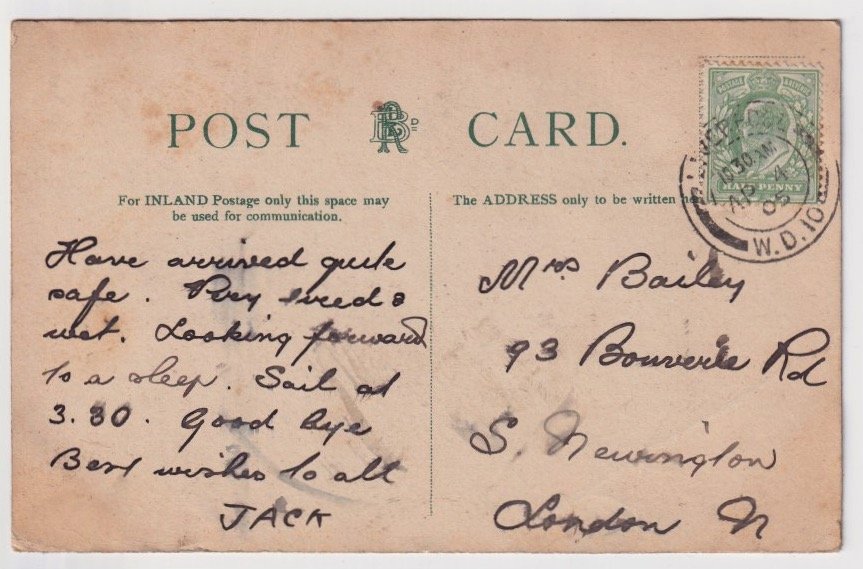
Canada was less than 40 years old when this postcard was sent. It was part of the British Empire, and several million Brits headed out to a new life there in the early 20th century. Maria Bailey’s nephew 26-year-old John Davy is about to become one of them. Having travelled from London to the port city of Liverpool, he dashes off an emotional postcard to his aunt, Mrs Maria Bailey, its ink smudged with haste or raindrops. It is franked at 10.30am on April 4 1905, and shows Lime Street. Jack’s train from London would have arrived at Lime Street Station, on the right of the postcard. The docks, from where Transatlantic steamships sailed to America and Canada, are a 20-minute walk away. He leaves England, he says, in five hours. What had happened in Jack’s life between Bouverie Road and this pivotal moment? We found him on the 1901 Census, aged 22 and lodging with his little brother Henry at a widow’s home on Hackney’s Balls Pond Road, a mile from their childhood home. His job was recorded as solicitor’s clerk. Now, four years later, he is taking an uncertain leap into a new life..
-

Montreal, Canada, April 24 1905
“Dear Aunt, Hope you are well. Am doing fine myself. Plenty of work here & no men to do it. They all go west this time of year. Don’t think I shall come back. Best wishes to all from yours affectionately, Jack”
-

Three weeks later Jack has arrived safely in Canada - the journey would have taken most of the first week. He is finding his feet and sounds buoyant, in total contrast to his previous message. Writing from Montreal, his postcard shows Mount Royal, where the sport of tobogganing was first popularised several decades earlier.
-
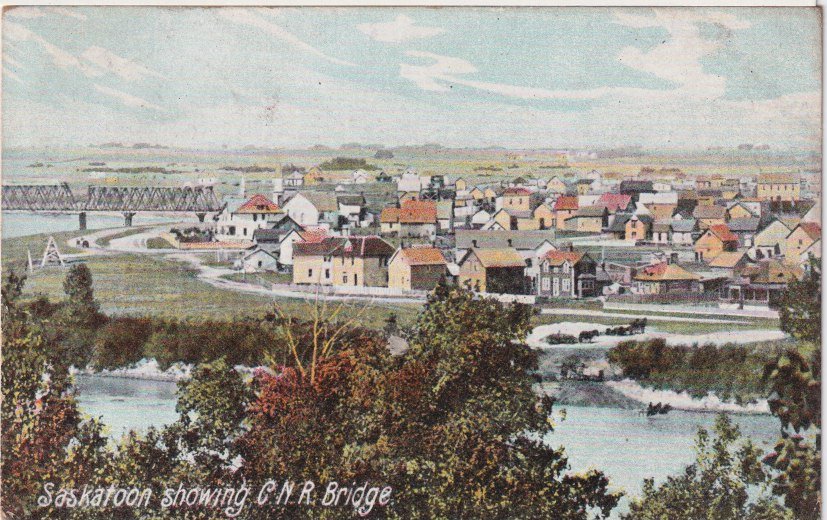
Saskatoon, Canada, November 1909
“Dear Emma, just a few lines hoping you are quite well as this leaves me, I am still at the same old job, give my love to all, and accept the same yourself HARRY”
-

Saskatoon in Saskatchewan, on the prairies of West Canada, had a population of just a few thousand in 1909. But it was also one of the country’s fastest growing cities thanks to river crossings for railways like the new Grand Trunk Bridge shown on the postcard (CNR Bridge stands for Canadian National Railway Bridge). It is sent to Emily by Harry, who has a strong connection to the whole family. This is surely Henry Davy, John’s younger brother and Ethel’s cousin, who would now be 28 We notice that he signs his name in capitals the same way Jack did in his first card. In the 1901 Census, Harry is working as a typesetter, which was a skilled, well-paid profession in the printing trade. Is this the ‘same old job’ or has he had to adapt to earn a living in Canada?
-
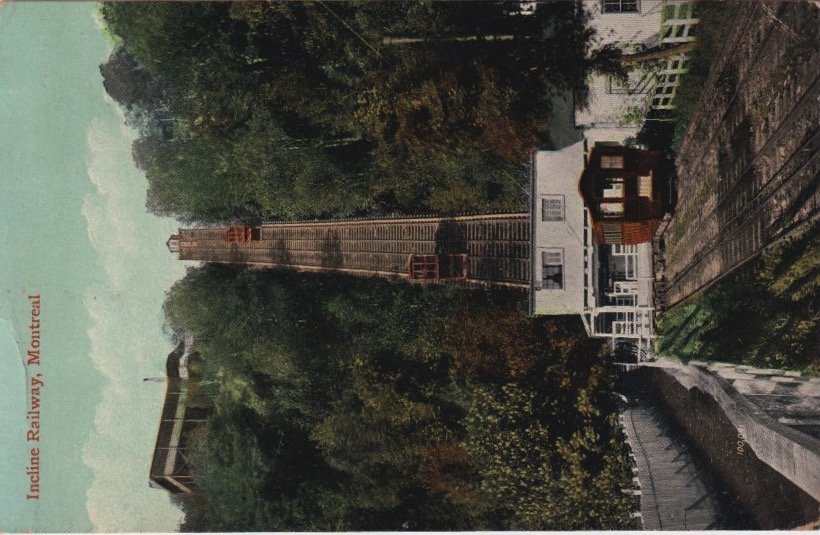
Montreal, May 29 1911
“78 Anderson St, Montreal. Dear Aunt, We arrived in Montreal Thursday 25th about 12 o’clock noon. We were one day late for it was very foggy at Newfoundland. Harry & Jack were there to meet me, we were two hours getting through the customs. I went up this elevator on Sunday with Jack and Mary, it takes us up to the mountains. There is a lovely view of the city when you get to the top. Best love from all, Ada.”
-

Two years later, another family member has crossed the Atlantic. It’s Ada, Maria’s energetic, affectionate niece, who had been been working in London as a live-in draper’s assistant and remained very close to the Bailey family. Harry and Jack have come to meet her together, which is quite some effort for Harry since Saskatoon is 1,500 miles from Montreal, a journey of several days by train. It seems certain now that these are all Davy siblings. Is Mary Jack’s new wife? The Incline Railway shown in the postcard was a steam-driven funicular railway which operated from 1884 to 1918.
-

Montreal, Park Avenue in Winter, November 20 1911
“This is near where Lucy lives. We are all quite well. Hope you are the same. AD”
-

A.D. is in Canada too! If, as we think, this is Ann Davy, Ada, John and Henry’s sister, then is she visiting? She says that Lucy lives in the city, so there are definitely four and possibly five siblings now living in Canada. She is obviously keen to share a postcard showing the extreme weather they’re experiencing in a Montreal winter.
-
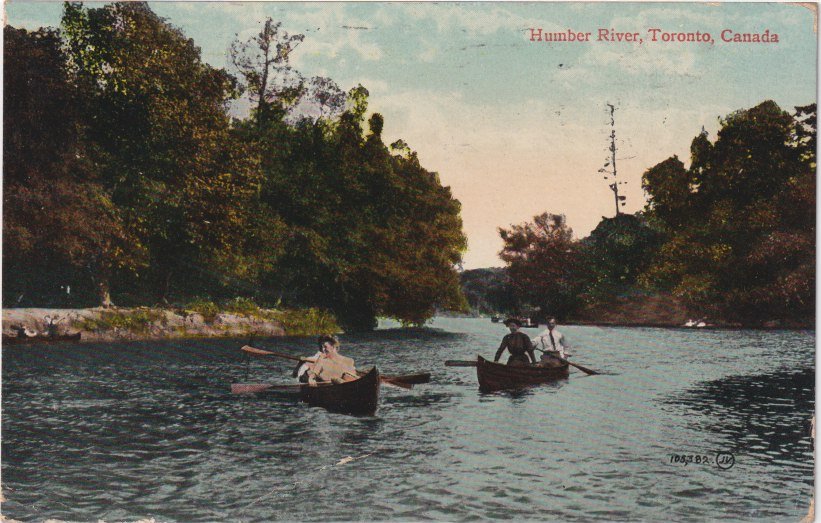
Humber River, Toronto, Canada, August 14 1914
“Arrived here from Montreal by boat. We were exactly two days on the water and two nights. The weather was perfect, it was a lovely trip. On Monday we are going to Niagara Falls, Love from Ada”
-

Three years later, while war has broken out in Europe this postcard from Ada on holiday in the Great Lakes radiates peace and calm.
-
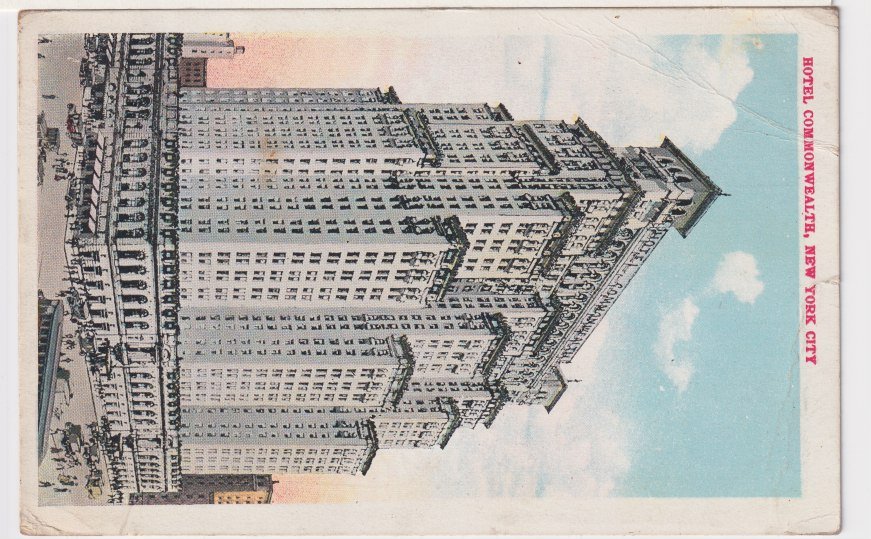
New York, Jun 1 1922
“Dear Aunt, I am having a fine time here, glorious weather. New York is a wonderful city, very up to date. We are taking in all the sights. Love from Ada.”
-
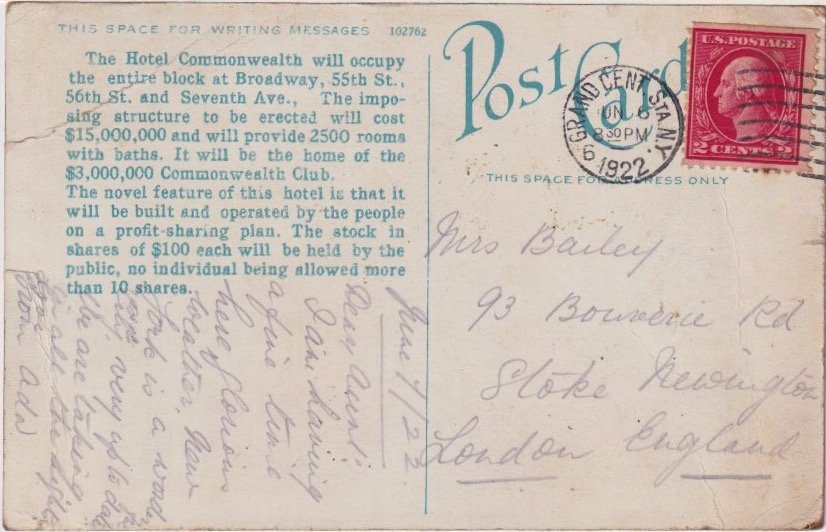
Eight years have passed and Ada is visiting New York as a Canadian for what seems to be the first time. Her card shows the Hotel Commonwealth, which was planned to be the biggest and grandest in the world. For our final card it’s an unfortunate choice as the hotel was never built: plans fell apart amidst financial problems and accusations of fraud.
Lucy’s story
-
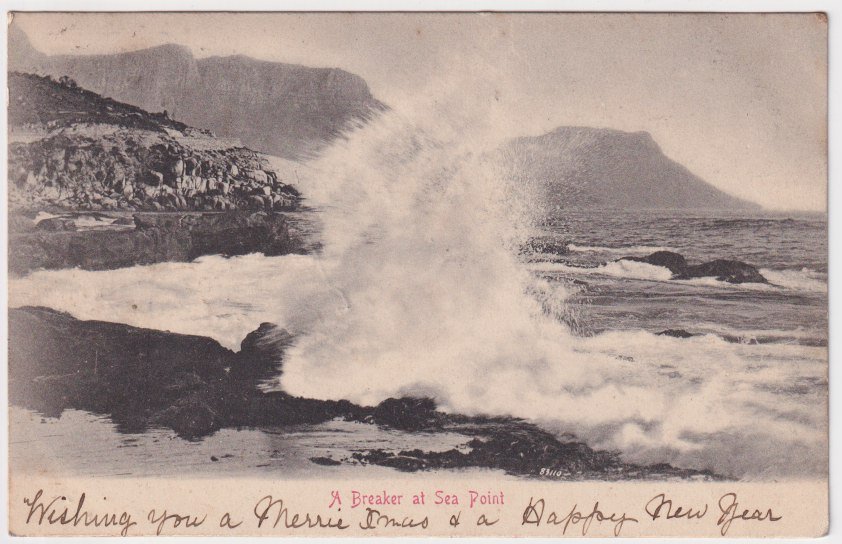
Cape Town, December 6 1907
“Wishing you a merrie Xmas & a Happy New Year”.
-

The postcard is unsigned but the handwriting on the following one suggests that it is from the same person, Lucy. We immediately wonder if it’s Lucy Davy. Has she really sailed alone to the Cape Colony in the aftermath of the Boer War, four years before it becomes part of the Union of South Africa? And if so, why?
A check on the 1901 Census reveals that Lucy had been living in Prittlewell, part of Southend-on-Sea, with her oldest sister, Eliza Clara, and has no occupation - they have both rather proudly answered ‘own means’ to that question. Worse news is we also found a death notice for the third Davy brother Thomas, 25, who was living with them. Was money running short? Or was life just not turning out the way she had hoped.
One strong possibility is that Lucy left England as part of a supported movement. The South African Colonisation Society was one of several organisations that promoted emigration to ‘surplus’ single women in the UK in order to strengthen the British Empire. More than 4,000 women sailed out to Cape Town in the first decade of the 20th century, hoping to perhaps meet a husband while doing their patriotic duty for King and country.
Was 29-year-old Lucy one of them?
-

Cape Town, South Africa, December 9 1908
Lucy’s second Christmas card is signed, “From Lucy & Frank. Wishing you a Merry Christmas & a Happy New Year.” Frank is new information! A search of registered weddings in South Africa’s National Archives shows many British brides, and one wedding is of particular interest: Lucy Helen Davy marries Frank Harvey Munford, a 26-year-old builder from Portsea Island in Hampshire, on September 17 1908. Her address is given as 31 Upper Loader St, Cape Town. And squinting at the signatures of the two witnesses we see that one reads EC Davy. Eliza Clara is with her sister, so most likely the two women travelled out and lived together.
-

One loose end: in some early censuses, Lucy is recorded as Lucy E. Our guess is that the recorder misheard Helen as Ellen - perhaps indicating that the North London accent with its dropped ‘h’ had a part to play.
-

London, September 28 1909
“Tuesday morning. Dear Aunt, I have not heard from Madeira, but still live in hopes. This is a nice day for your washing. Best love from Ada”.
-
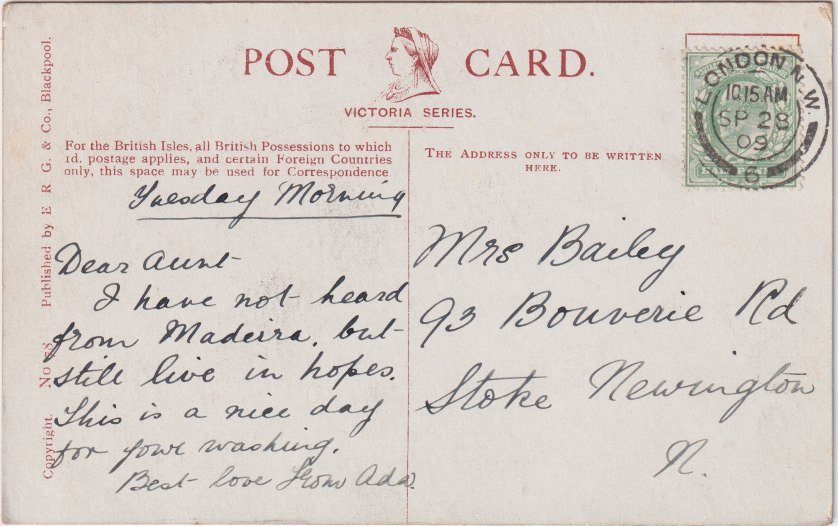
The subtropical Portuguese island of Madeira was the usual and only port of call on sailings from Southern Africa to England. Is Ada - as well as an anxious Mrs Bailey - waiting for her two sisters to return safely to England alongside Lucy’s new husband?
-

Portsmouth, August 9 1910
Dear E, Just got back from a nice bike ride all in the rain coming back. Am now off to the Kings Music Hall. Love from Ada. Lucy and I are going to come Sunday if fine.”
-

We featured this card in the Beside the Seaside section but only now do we realise how it fits into the jigsaw. Lucy has, we assume, been home from Africa for 11 months. On checking the 1911 census (carried out on April 2), we find that she and her husband Frank are recorded as living in Portsmouth with two children: Lucy Lavinia, aged one, and Vera Mabel, aged 2 months. So Lucy was expecting Lucy Lavinia when she and Frank decided to return to England. And she will most likely be taking her on the train ride to visit the Baileys in Stoke Newington at the weekend. There is no word on Eliza Clara, and since she makes no appearance in England’s 1911 Census we are wondering if she stayed in Africa?
-

And away... July 25 1911
It is now the summer of 1911 and two months since Ada’s arrival in Canada. The passenger list of Cunard’s new steamship The Albania, which is docked in Southampton, shows that Lucy, Frank, Lucy Lavinia and Vera Mabel Munford have boarded the ship and have third-class tickets to sail to Montreal. Their future lies across the Atlantic. No doubt they are greeted warmly at the port by at least some of the Davy clan. And within five months Lucy is sufficiently established in Montreal to host her sister ‘AD’, as seen in the earlier postcard, above. These resilient, adventurous siblings - Jack, Harry, Ada, Lucy, Ann and Eliza Clara no doubt will continue to support each other as they forge new lives thousands of miles from North London.
Who is Bertha?
-

Halifax, Canada, April 1 1906
“Dear Mrs Bailey, Have just arrived quite safely at Halifax, will write you more fully later. Bertha”
-

A woman called Bertha has sent a card to Ethel’s mother from Halifax, Nova Scotia, the arrival point for many UK emigrants to Canada. The postmark is Halifax but the card is of the scenic Riverside Drive in New York - did her ship call there on the journey? Maria obviously has a maternal attitude to Bertha as it seems Bertha has been instructed to let her know the minute she arrives safely, and has inserted the word ‘just’ to show she’s keeping her word.
-
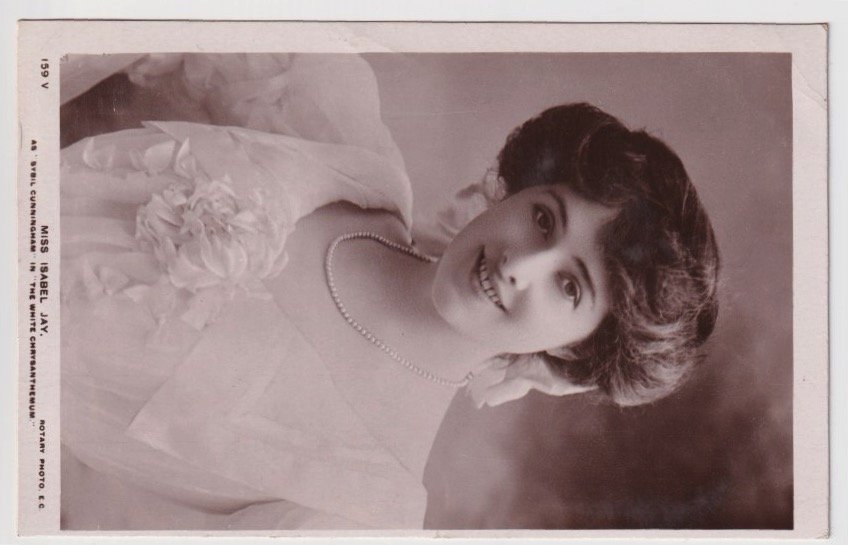
London, March 21 1906
“Dear Emmie, Would you please order one of those Knitting Books when you are going that way. Yours affectionately, Ada. The Pretoria has arrived at Halifax.”
-

A few days earlier, Mrs Bailey’s niece Ada has sent a postcard of opera singer Isabel Jay to Emily that deals initially with trivia. Then, above the message she adds: “The Pretoria has arrived at Halifax.” Is she letting her family know that Bertha’s transatlantic steamship has arrived safely in Nova Scotia? We have found a Bertha Walker, a 26-year-old ‘spinster’ leaving Liverpool on the Pretorian in February to travel to St John, New Brunswick. Is this Bertha?
-

Niagara Falls, 11 August 1906
“With Bags of Love & Best Wishes from your Old Pal Bertha”.
-

Four months later, Bertha is at Niagara Falls in Ontario - the postmark shows St Catherines, the area’s largest town. She writes to Emily this time, so perhaps she is an old schoolfriend who has lost her own parents, which would explain Mrs Bailey’s show of maternal support?
-

Banff, Alberta, Nov 12 1906
“Bags of love to you all. Arthur sends a lump Gratis. Your Old Pal Bertha.”
-

This postcard zooms 3,000 miles west of Halifax to Canada’s oldest national park. Banff was a popular destination for visitors thanks to the Canadian Pacific Railway who had built two big hotels including the Banff Springs Hotel, now the Fairmount Banff Springs. However, it was sent, like the last card, from St Catherines, Ontario, so perhaps Bertha is simply sending postcards that show Canada’s fabulous scenery.
-
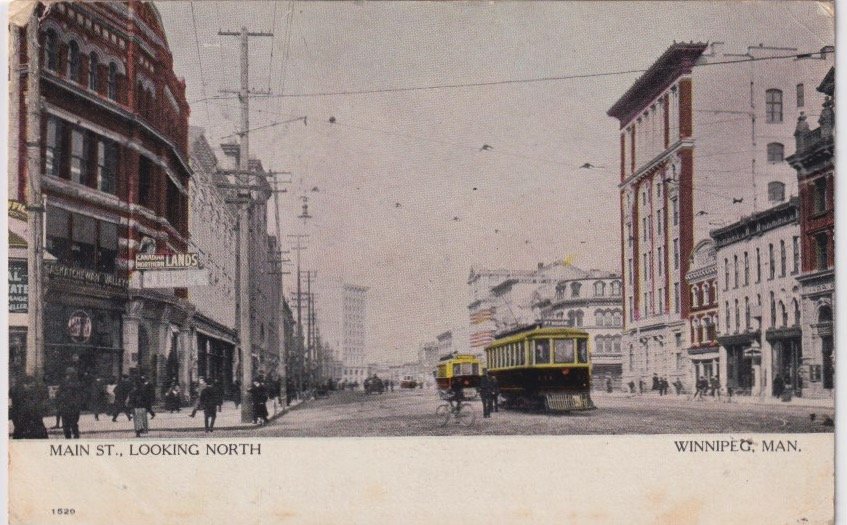
Winnipeg, March 25 1907
“Bags of love from your old pal Bertha”.
-

This is the final postcard from Bertha. It’s of the city of Winnipeg, and was perhaps chosen to show how wide the high street is compared to London’s and that it has modern trams and electricity. Again, it was sent from St Catherines, Ontario, which is 1,200 miles from Winnipeg. So it seems like that St Catherines is where Bertha settled - but having failed to track her (and Arthur) down in Canadian records, we wonder if we will ever know more about her than that.
